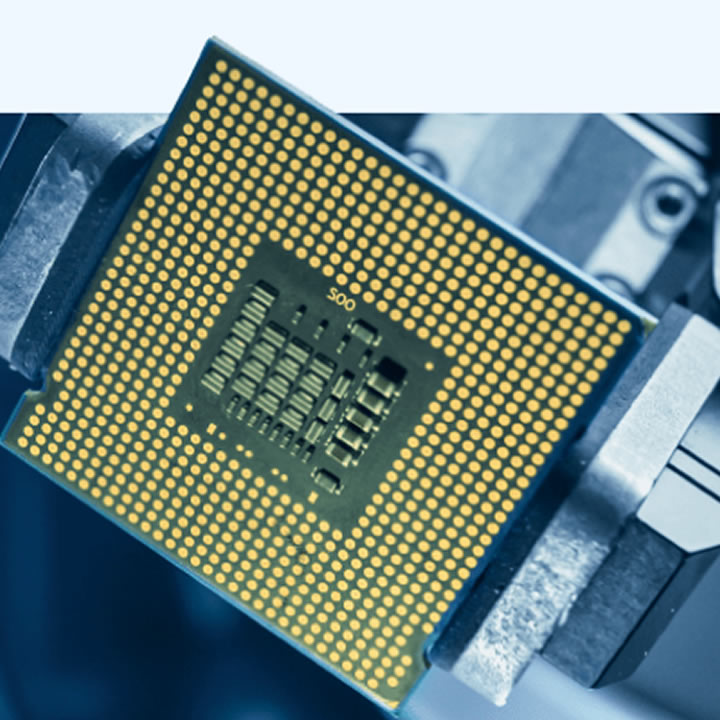Sourcing high-quality electronic components is a critical aspect of ensuring the reliability and performance of electronic devices.
Whether you are a manufacturer, an engineer, or an individual enthusiast, the quality of the components you use directly impacts the functionality and durability of your projects.
In this guide, we will explore the key considerations and strategies for successful electronic component procurement while also highlighting the importance of this in the process.
Why High-Quality Components Matter
Before diving into the sourcing process, it’s crucial to understand why high-quality electronic components are essential:
1. Reliability: High-quality components are more reliable, reducing the risk of device failures and malfunctions. This is particularly crucial in critical applications such as medical devices and aerospace systems.
2. Performance: Quality components perform consistently and as expected, ensuring that electronic devices meet or exceed their design specifications. This is vital for achieving optimal performance in various industries.
3. Longevity: Quality components tend to have a longer lifespan, contributing to the longevity of electronic devices. This is especially important for consumer electronics and industrial equipment.
4. Safety: In applications where safety is paramount, such as automotive electronics or energy infrastructure, subpar components can lead to hazardous situations. High-quality components help ensure safety and compliance with industry standards.
Key Considerations for Sourcing High-Quality Components
Now, let’s explore the key considerations when sourcing electronic components:
1. Identify Trusted Suppliers: Work with reputable suppliers and distributors known for their commitment to quality. Conduct research, read reviews, and seek recommendations from industry peers to identify trusted sources.
2. Check Certifications and Standards: Ensure that the components you source meet relevant industry certifications and standards. This is especially critical in regulated industries like healthcare and aerospace.
3. Inspect Samples: Before making bulk purchases, request samples of electronic components to evaluate their quality and compatibility with your specific application. This step can help you avoid potential issues in the long run.
4. Review Documentation: Thoroughly review documentation provided by suppliers, including datasheets and specifications. Pay attention to details such as operating temperature ranges, tolerances, and electrical characteristics.
5. Counterfeit Detection: Counterfeit electronic components can be a significant concern. Implement counterfeit detection measures, including visual inspection and testing, to ensure you receive genuine components.
6. Traceability: Traceability is crucial in industries where product recalls or failure analysis are necessary. Choose components that come with clear traceability records, allowing you to identify the source and history of each component.
7. Consider Supply Chain Transparency: Transparency in the supply chain is increasingly important. Inquire about your supplier’s supply chain practices, including sourcing of raw materials and quality control processes.
Strategies for Effective Electronic Component Procurement
To streamline the procurement process and ensure a steady supply of high-quality components, consider these strategies:
1. Establish Relationships: Build long-term relationships with trusted suppliers. A strong partnership can lead to better pricing, priority access to components, and improved communication.
2. Diversify Suppliers: Avoid overreliance on a single supplier. Diversify your sources to mitigate the risk of disruptions in the supply chain.
3. Forecast Demand Accurately: Accurate demand forecasting is essential to prevent overstocking or understocking of components. Utilize inventory management software and historical data for better forecasting.
4. Just-in-Time Inventory: Consider implementing a just-in-time (JIT) inventory system to reduce carrying costs while ensuring a consistent supply of components when needed.
5. Safety Stock: Maintain a safe stock of critical components to provide a buffer in case of supply chain disruptions or unexpected demand spikes.
6. Collaborate with Distributors: Work closely with authorized distributors who have direct relationships with component manufacturers. This can improve your access to genuine components.
7. Monitor Market Trends: Stay informed about industry trends and market conditions that may impact component availability and pricing. This proactive approach helps you adapt to changing circumstances.
The Role of Electronic Component Procurement in Innovation
Innovation is at the heart of the electronic components industry. Electronic devices are continually evolving, and high-quality components are essential for pushing the boundaries of what is possible. Here’s how effective electronic component procurement plays a pivotal role in innovation:
1. Enabling Cutting-Edge Technology: High-quality components are the foundation of cutting-edge technology. Engineers and innovators rely on these components to create new and improved devices with enhanced features and capabilities.
2. Reducing Development Time: Efficient procurement processes, including quick access to quality components, can significantly reduce product development timelines. This is crucial in fast-paced industries like consumer electronics.
3. Ensuring Product Reliability: Innovative products are only valuable if they are reliable. Quality components ensure that groundbreaking inventions are also durable and dependable, enhancing their market appeal.
4. Meeting Market Demand: As consumer expectations evolve, the demand for innovative electronic devices continues to grow. Effective component procurement ensures that you can meet market demand and capitalize on emerging trends.
Embracing the Future of Electronic Components
The electronic components industry is evolving rapidly, with advancements in materials, miniaturization, and integration. To embrace the future of electronic components effectively, consider these trends:
- Miniaturization and Integration: Components are becoming smaller and more integrated, enabling the creation of compact and powerful devices.
- Emerging Materials: Innovative materials, such as wide-bandgap semiconductors and flexible electronics, are reshaping the industry and enabling new applications.
- Sustainability: Sustainability is a growing concern in the industry. Sourcing components with eco-friendly materials and manufacturing processes is increasingly important.
- AI and Automation: Artificial intelligence and automation are impacting component production, leading to improved quality control and customization.
In Conclusion
Sourcing high-quality electronic components is a critical endeavor that impacts the reliability, performance, and safety of electronic devices. Whether you are a manufacturer, engineer, or innovator, prioritizing quality in your electronic component procurement is essential.
By following the key considerations and strategies outlined in this guide, you can ensure that your electronic projects and products meet the highest standards of excellence and contribute to technological innovation.

